Why did Bill Gates invent a $ 233 billion toilet
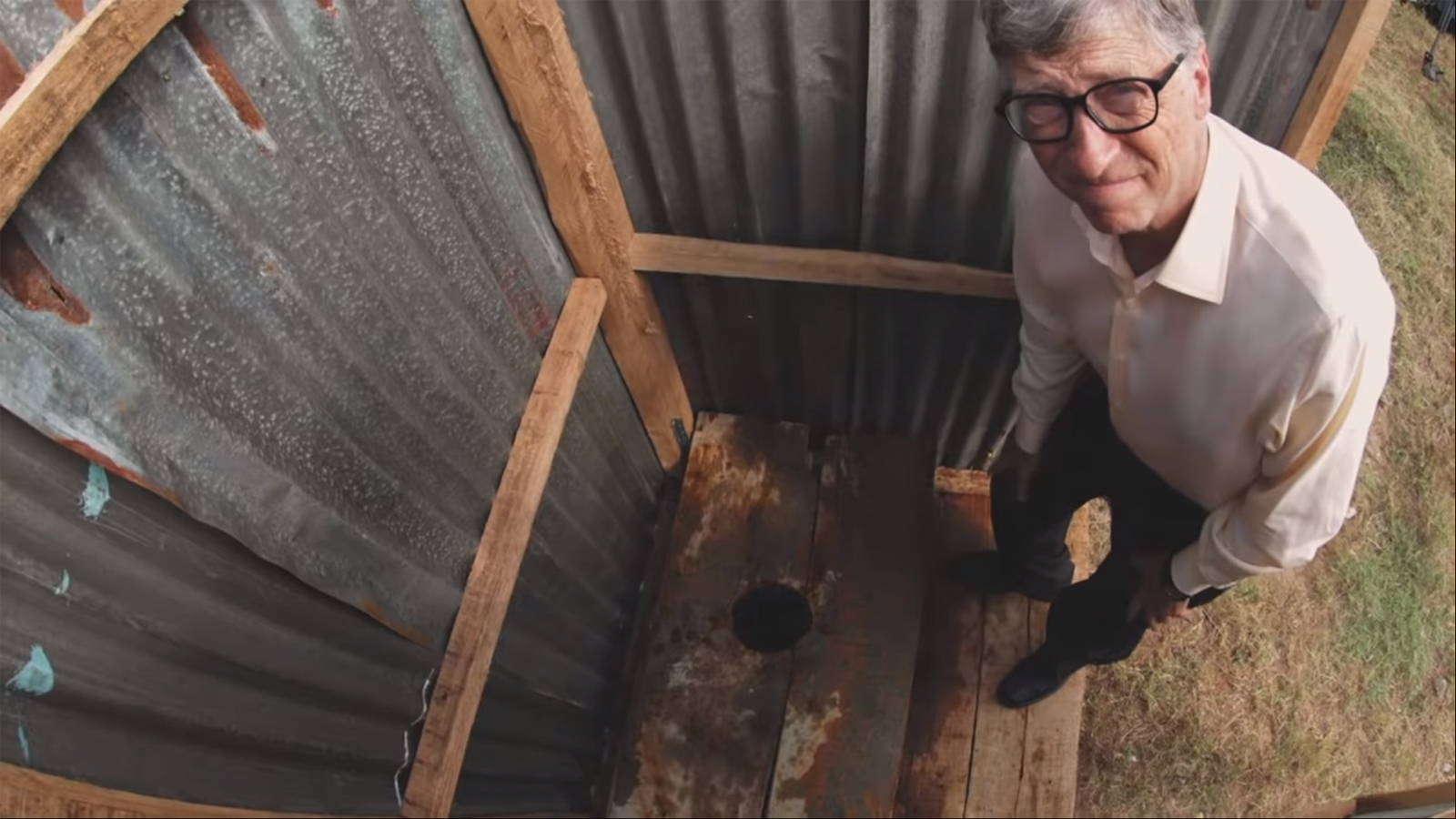
A frame from the Gates video explaining the importance of the challenge.
It is strange that on Habré has not yet written about it (maybe the topic is slippery?). But yesterday, Bill Gates in Beijing presented his development of the last seven years. Special toilets that work without water and kill all the bacteria in human waste. Gates believes that they will help save the lives of millions of people every year. According to him, this is one of the most important inventions of mankind over the past two hundred years.
With its world's largest private charity, the Bill and Melinda Foundation, Gates has been fighting against disease for twenty years. His main efforts were aimed at eliminating malaria in Africa (for example, by infecting mosquitoes with a special virus that prevents their reproduction). During this time, he saved about 6 million African children from death, and helped prevent another 122 million people from getting sick. If he had not spent the money on this, according to some estimates, he could still be the number 1 rich man on the planet. Since 1994, Gates has donated more than $ 35 billion in Microsoft shares to charity.
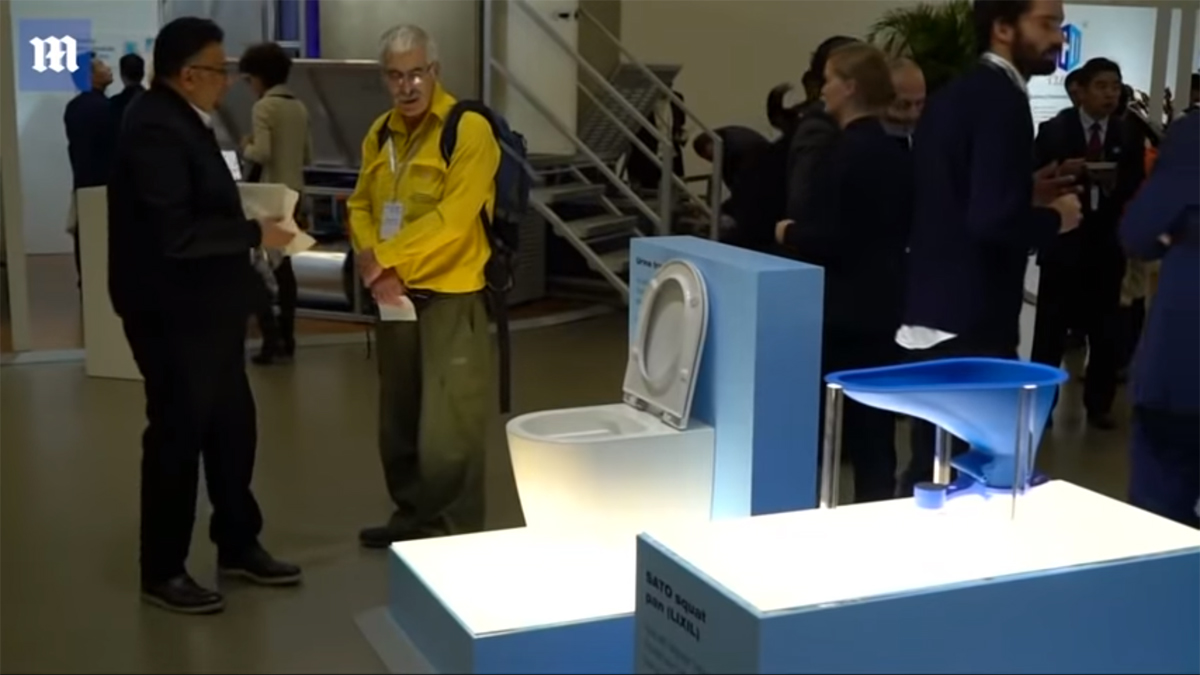
But there is an even more serious problem (in terms of deaths and diseases) than malaria. Infection of drinking water, cholera and associated diseases that kill millions of people every year. According to the World Health Organization, about 2.3 billion people on the planet do not have access to normal water or sewage. Every year, more than half a million children under the age of five die from such unsanitary conditions. (At the presentation, Gates talked about 4.5 billion in general, and, by the way, Russia was on his slide on the list of “problem” countries.)
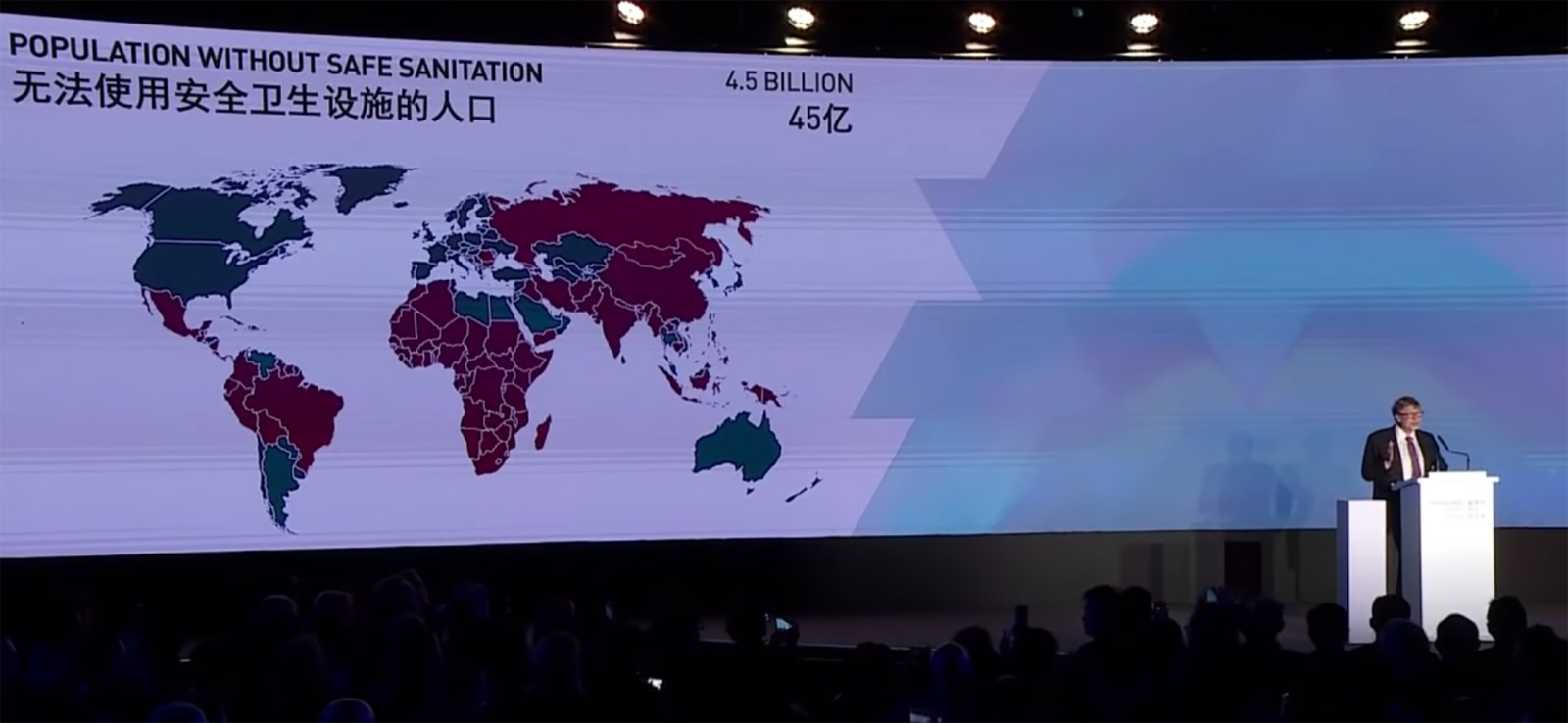
The billionaire tried to solve this problem in the most drastic ways. For example, he created a small transportable factory to process sewage into normal drinking water (and he drank even this water, to the dismay of those present). But the technology was too costly and impractical. In addition, it was difficult to change people's perceptions in local communities. Not everyone was ready to follow Gates' lead and drink from the sewer.
Bill Gates Tests Sewage Water, Past His Filter
Therefore, on Tuesday in China at the Reinvented Toilet conference, speaking to 400 industry representatives (China Clear, CRRC, Sedron, SCG Chemicals, Eram Solutions, Tide Technocrats, Siam Cement, etc.), the billionaire presented the results of his other project. Twenty new toilets with waste treatment systems that eliminate dangerous pathogens and convert waste into clean water and fertilizer.
The technology that you see in front of you is the most serious step forward in the field of sanitation over the past almost 200 years.
The Bill and Melinda Gates Foundation has long shown interest in this area. Back in 2010, he launched the Water, Sewage and Hygiene program. A year later, a search began for companies or teams of scientists capable of creating a new type of toilet that does not require electricity, sewage or a water source, while meeting the basic needs of people. Finally, some of these projects have brought results.
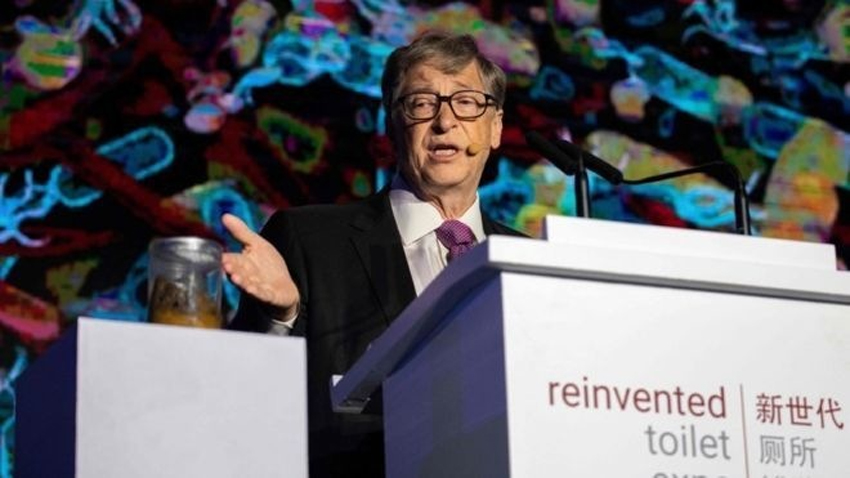
This image has already become a meme.
To demonstrate the billionaire came on the scene with a small jar, storing about 300 grams of human waste. According to him, such a bank contains 200 trillion cells with rotavirus, 20 billion Shigella bacteria and 100 thousand eggs of parasitic worms, which provoke infectious diseases. Without the ability to eliminate all this from the water that comes in contact with people, diseases will continue to expand, and urbanization only exacerbates the problems.
In India, for example, 53% of homes (600 million people) do not have a toilet, and people go out into the street in a common room, often not far from the river (see Slumdog Millionaire ). Prime Minister Narendra Modi says that this is a huge problem for the country. Millions of children experience developmental delays due to fecal bacteria that circulate freely in space. In many cities of the world, more than half of human waste enters the environment without any treatment.
According to the World Health Organization, every dollar invested in improving sanitation, brings about $ 5.50 of economic returns. Children no longer get sick, they can develop normally, spending on medicine is reduced, the population becomes more economically active. But it is necessary for the government to have sufficient finances, and to see the perspective twenty years ahead. Not to mention the difficulties with the introduction of traditional methods of waste treatment in the cities with a million people with a well-established infrastructure.
New Gates technology should help with this. In his toilets there is no pipe to drain, they do not need water. Instead, they process both liquid and solid wastes into fertilizers using chemicals. Water is cut off, and solid waste is simply chemically incinerated, leaving no chance to the bacteria. Heat from their burning is stored in the toilet and helps to dry the next batch of waste.
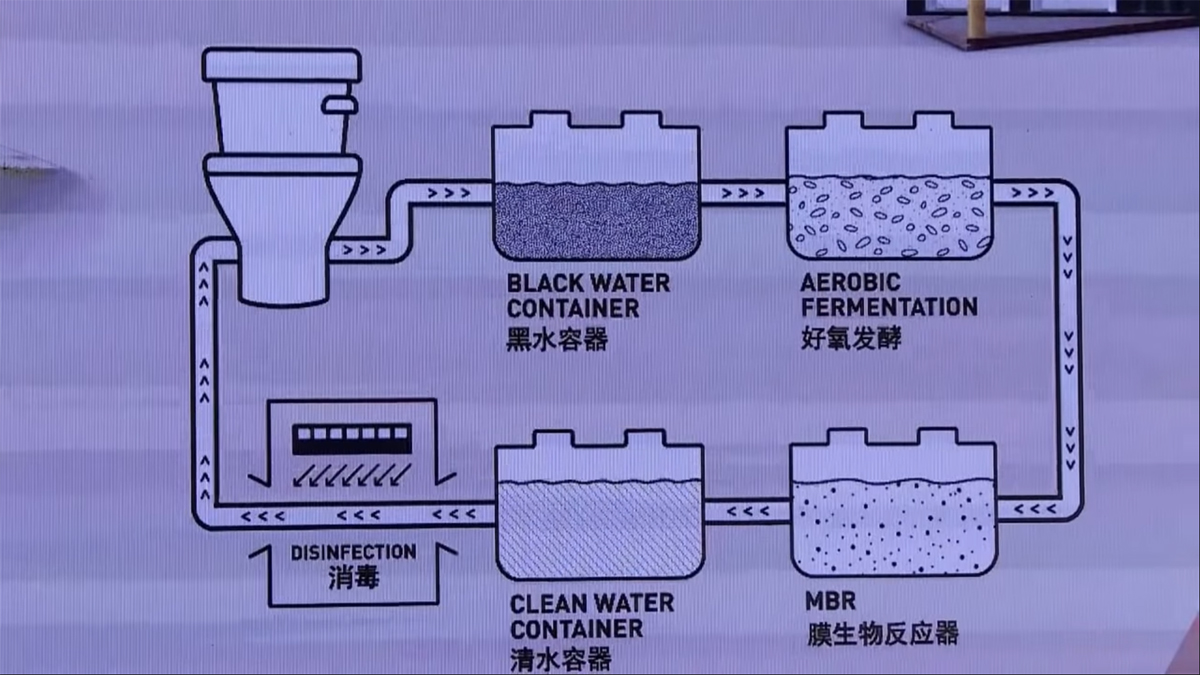
The most promising method in the "arsenal" of Gates was developed by the California Institute of Technology. Their electrochemical reactor converts water and waste into fertilizer and hydrogen. Hydrogen then goes to fuel cells and is stored there as an energy reserve.
At first, such new “chemical tremors” are planned to be placed in public spaces - schools, apartment buildings, public toilets. As people begin to get used to them, and the cost of production decreases, Gates expects such devices to appear in every home, at least in third world countries.
Our first goal is to reduce the cost of use to 5 cents a day.
The previous mini-factory, which processes wastewater, will also find its application - for example, at scotoferms. According to Gates, the wastewater from intensive animal husbandry sometimes pollutes the space no less than human activity.
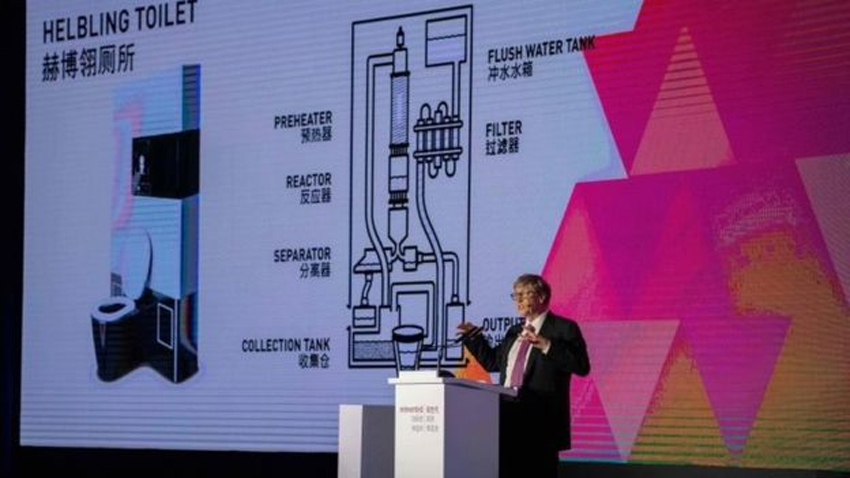
So far, the Bill Gates Foundation has invested about $ 200 million in research projects that develop methods for the effective disposal of human waste. In the next few years, the entrepreneur wants to spend another $ 200 million. New toilet bowls are already being tested in Durban, South Africa. The city, according to the billionaire, is ideal because it is expanding dramatically, and there is not enough traditional means for everyone, although the demand is large there.
The market of such "chemical toilets", according to the entrepreneur, will be $ 6 billion by 2030. And preventing their diseases, including diarrhea and cholera, will further reduce health care costs by $ 233 billion a year (!).
Such prospects of Bill Gates are very encouraging, although he admits that ten years ago he didn’t think that he would have to study so much feces. And his wife Melinda constantly has to remind him not to start talking on the subject at the dinner table.
By the way, how do you progress? From the creation of Microsoft - to the creation of toilets. Would you like that?
PS We at Pochtoy.com deliver goods from the USA favorably. From $ 11.99 per pound. Readers of our blog can get a discount of 7% after registering with the HABR code.
And until November 13, we have a free purchase of goods in the most popular stores in America. For details and promo code of the action - in the LAN.

